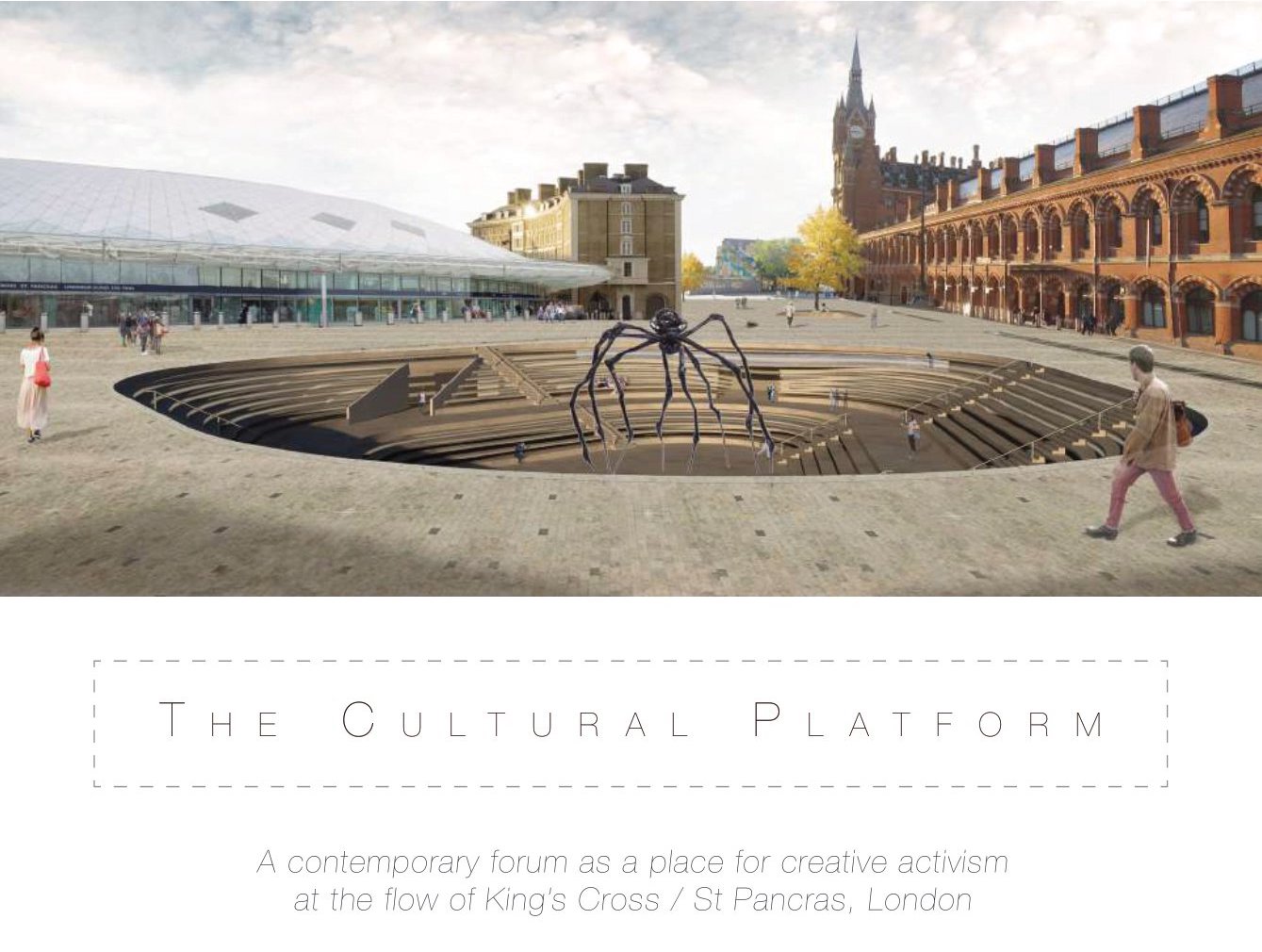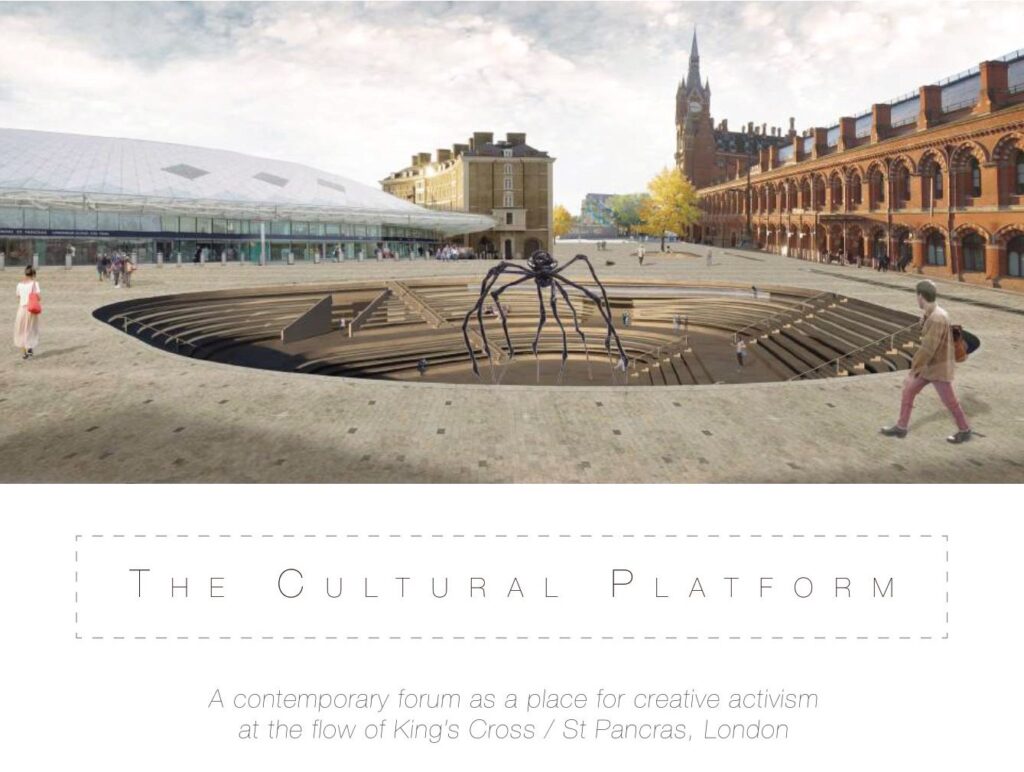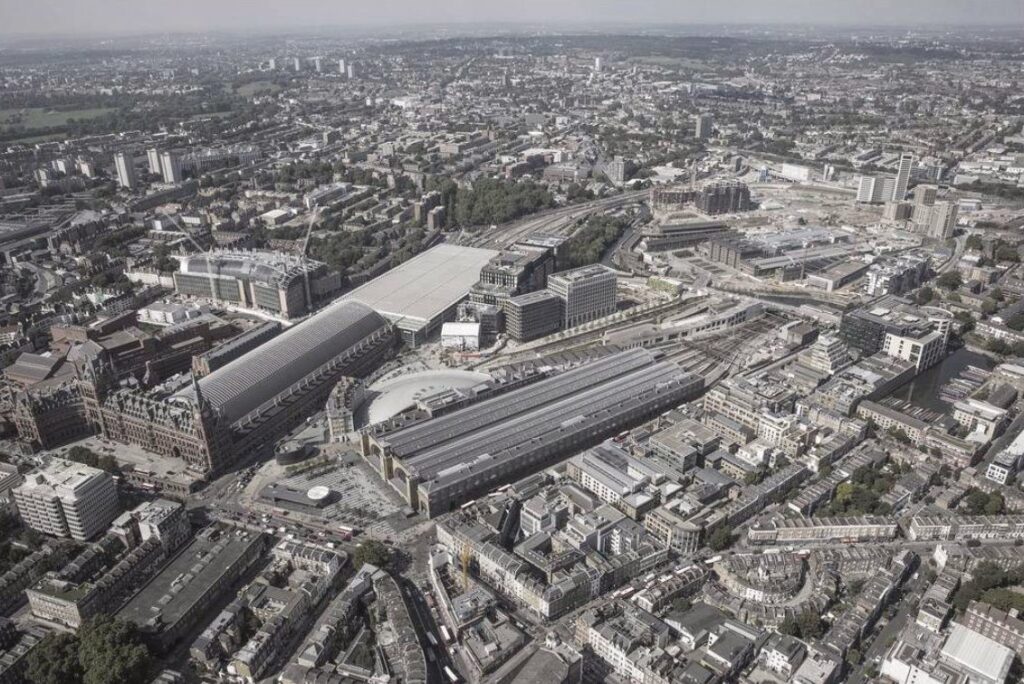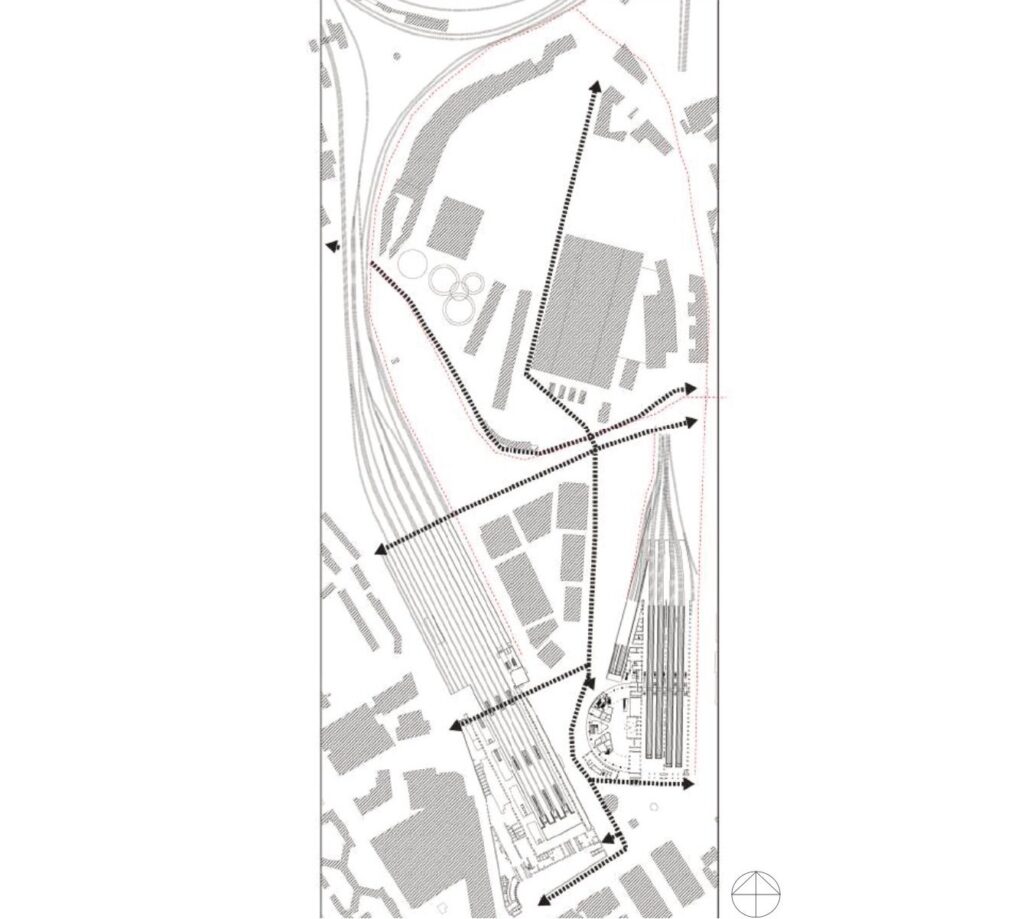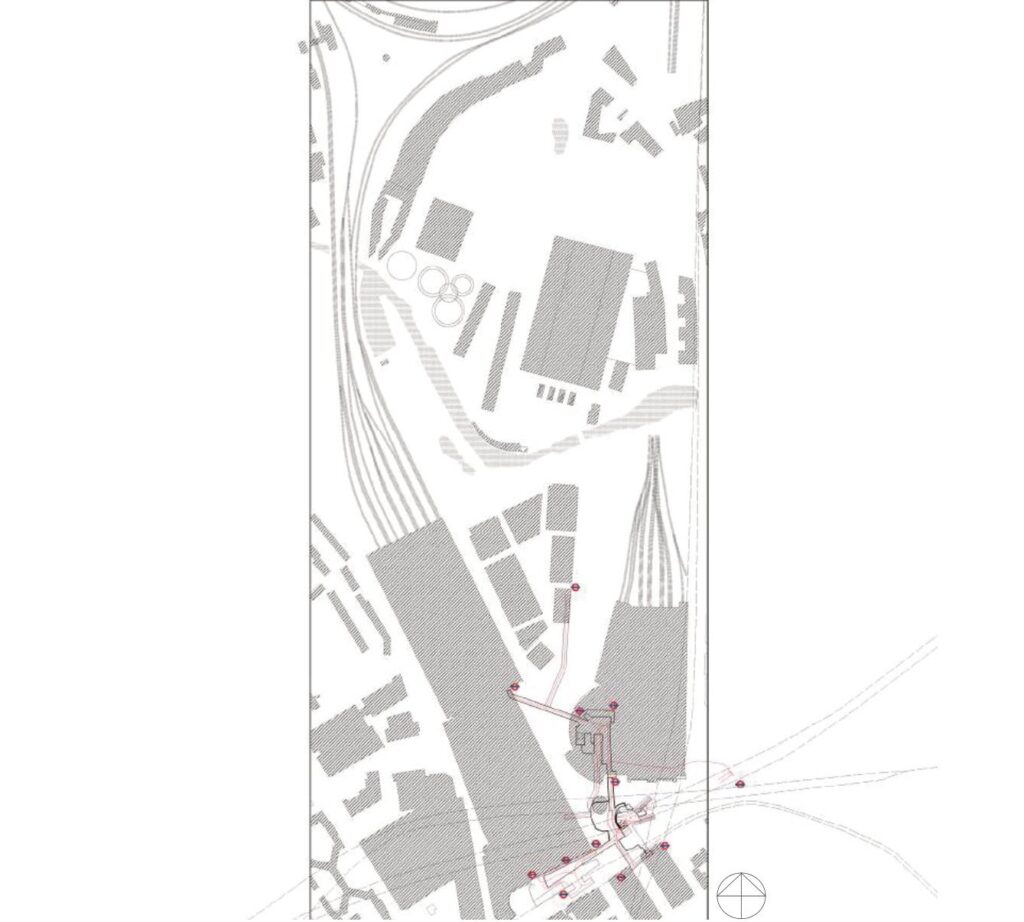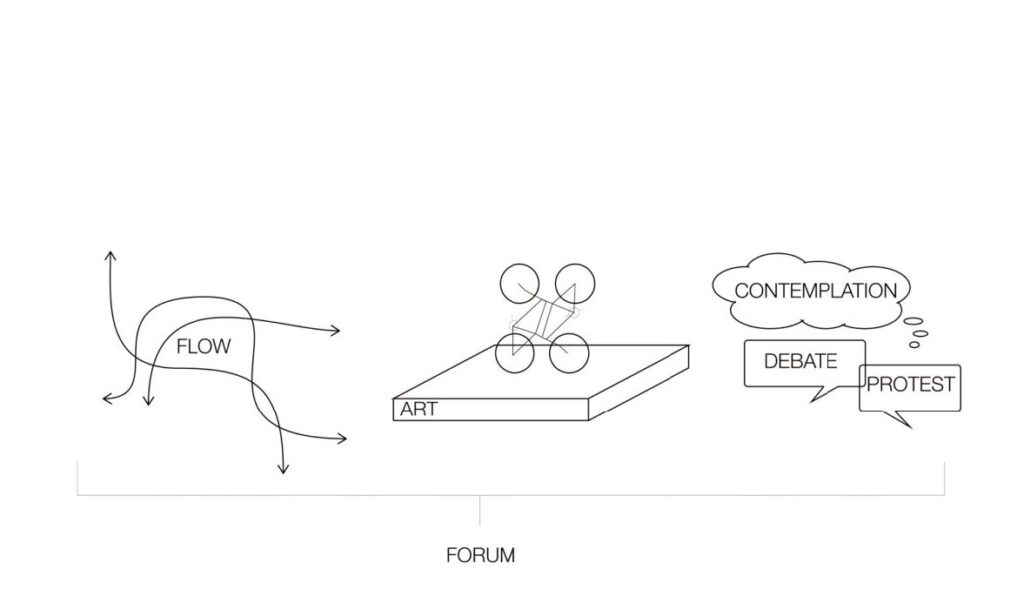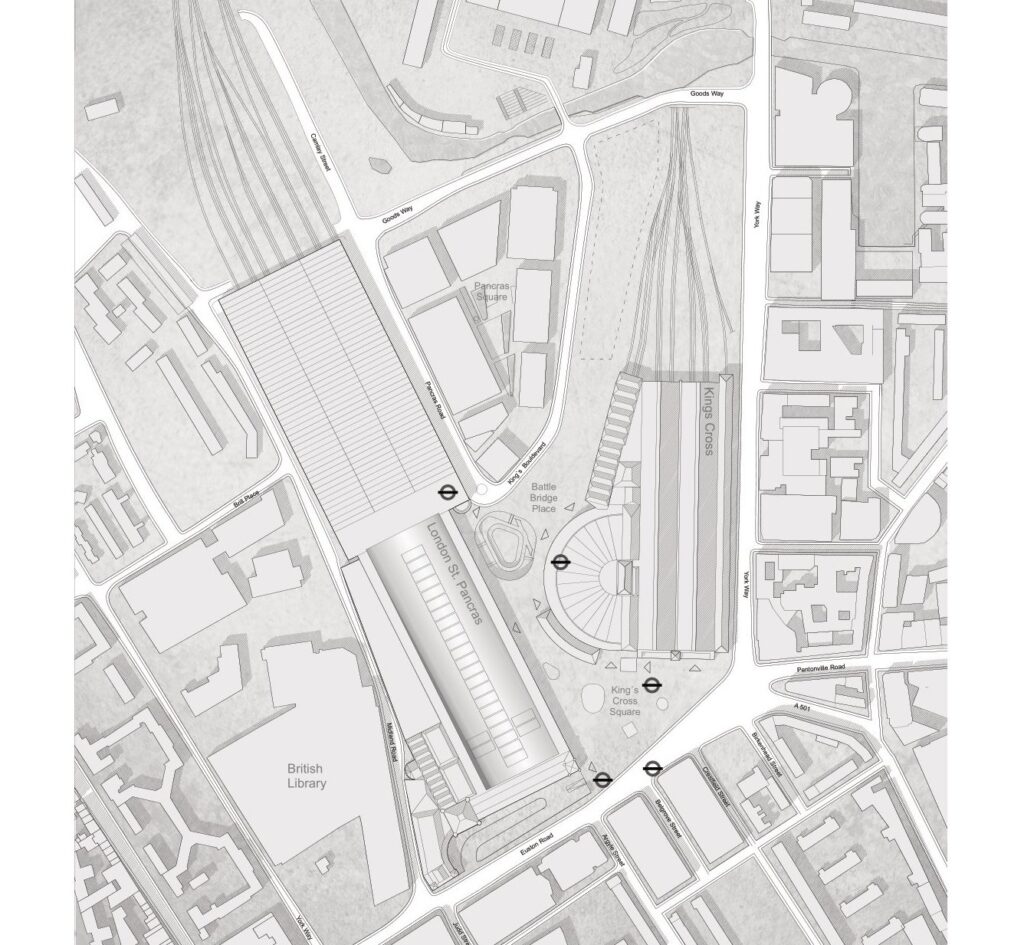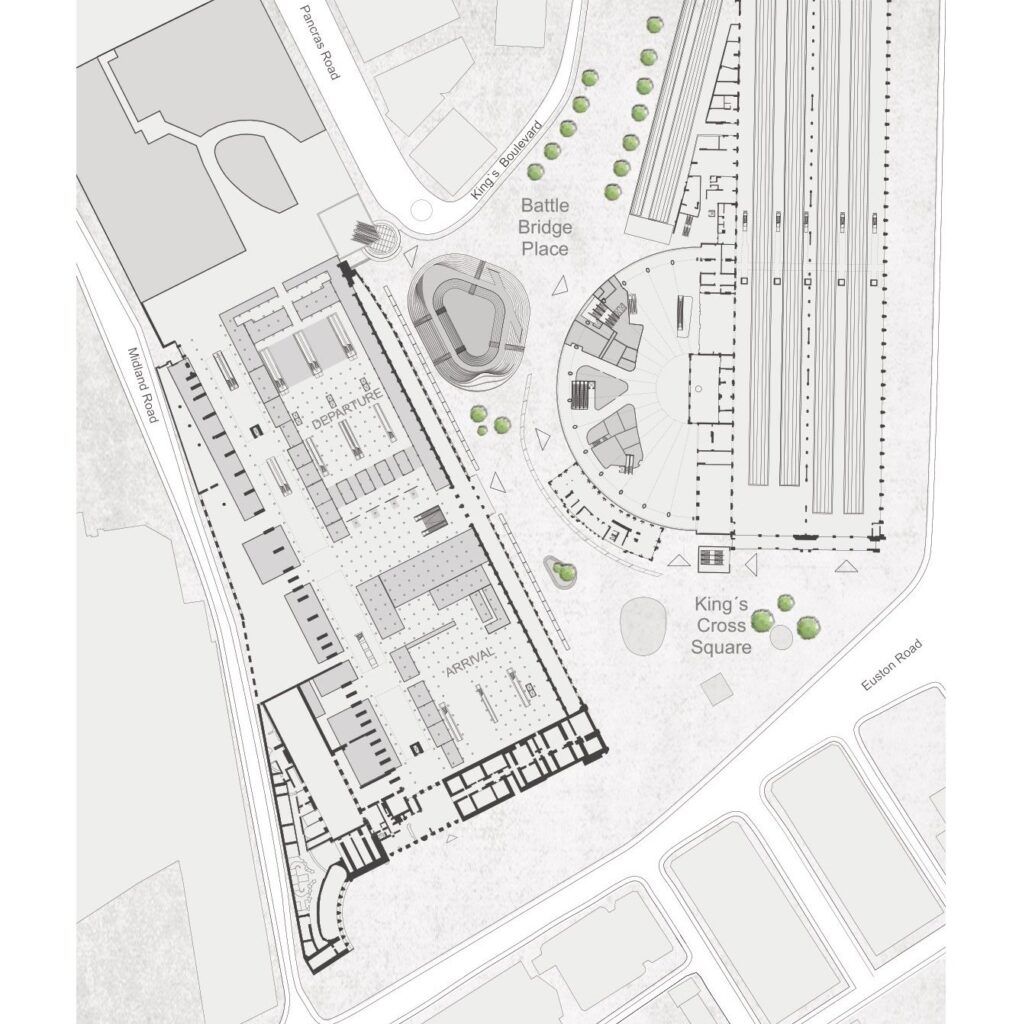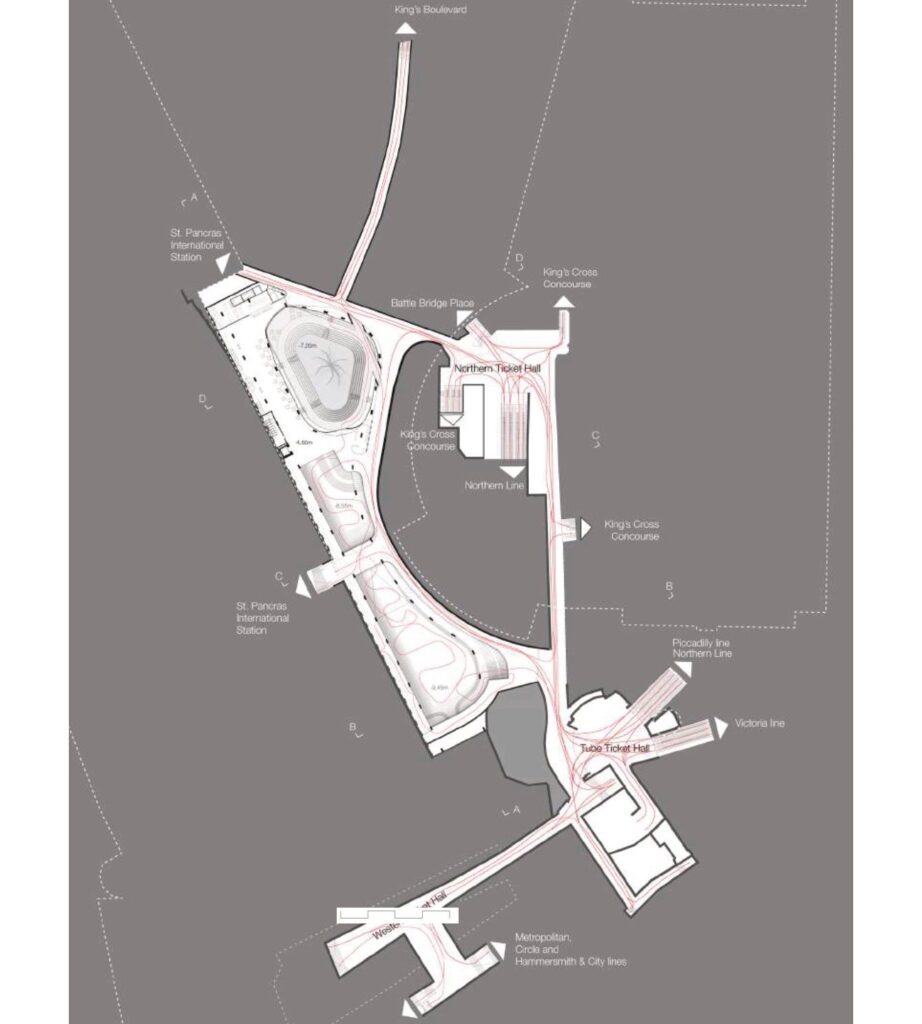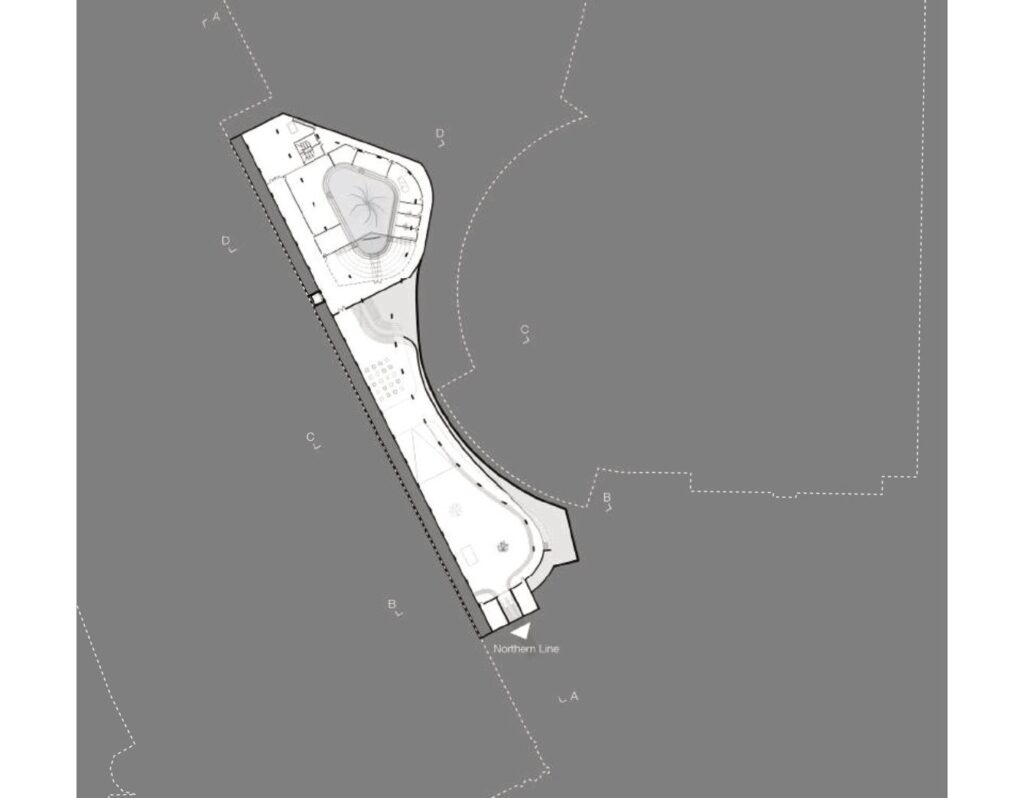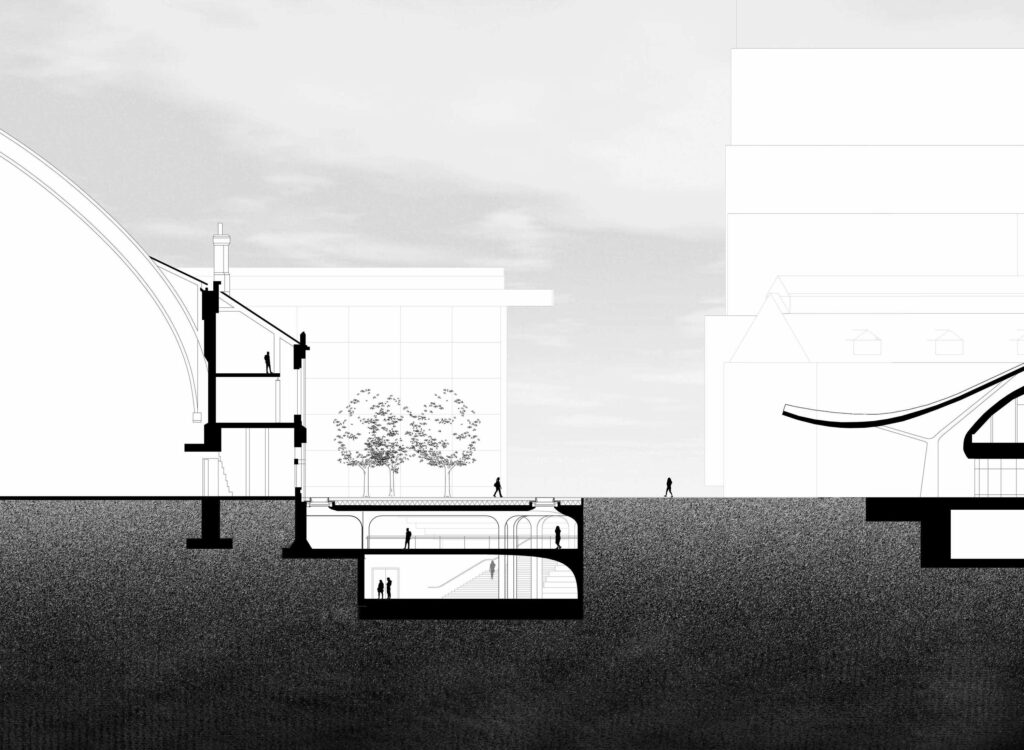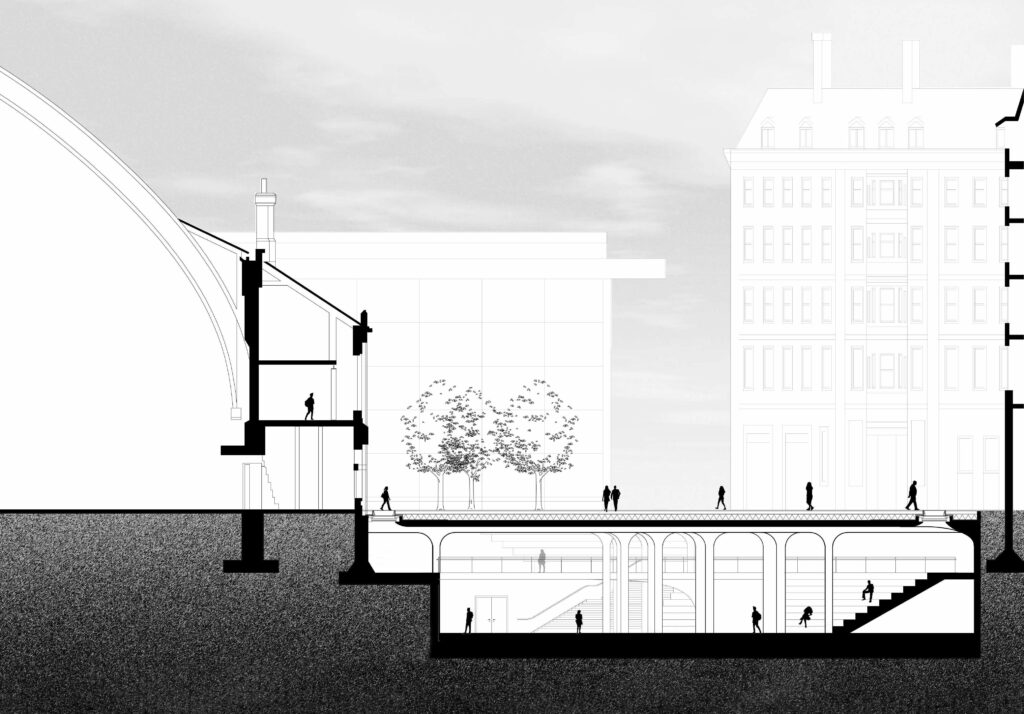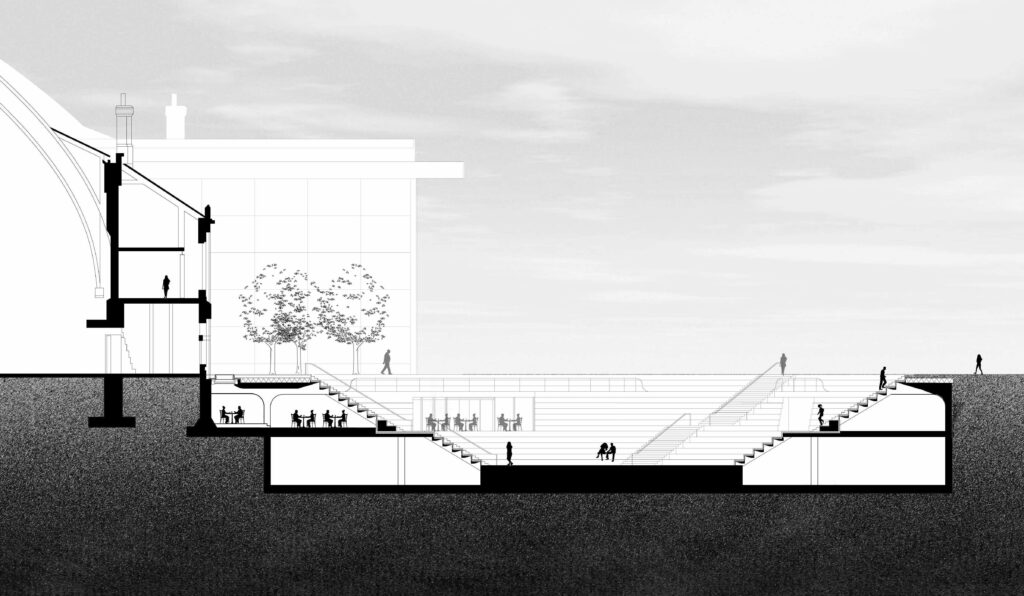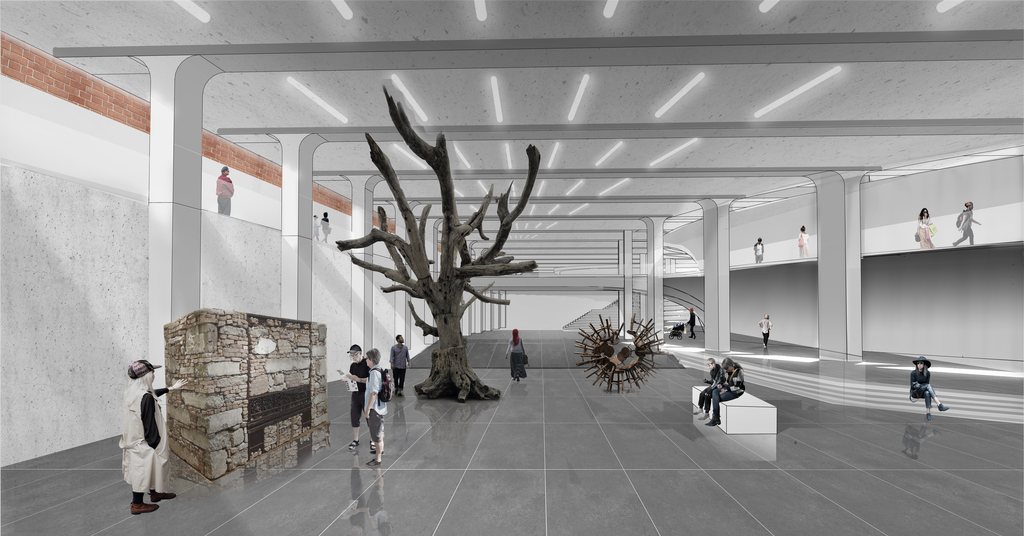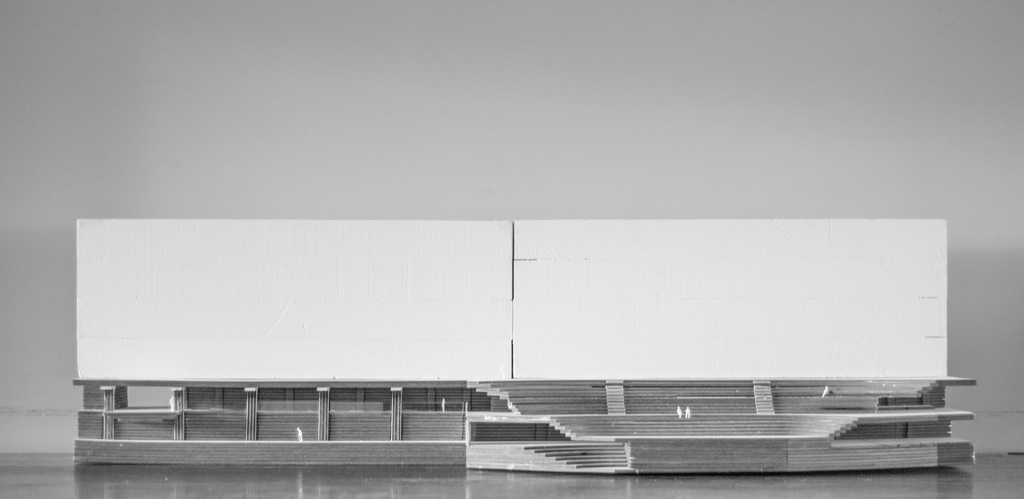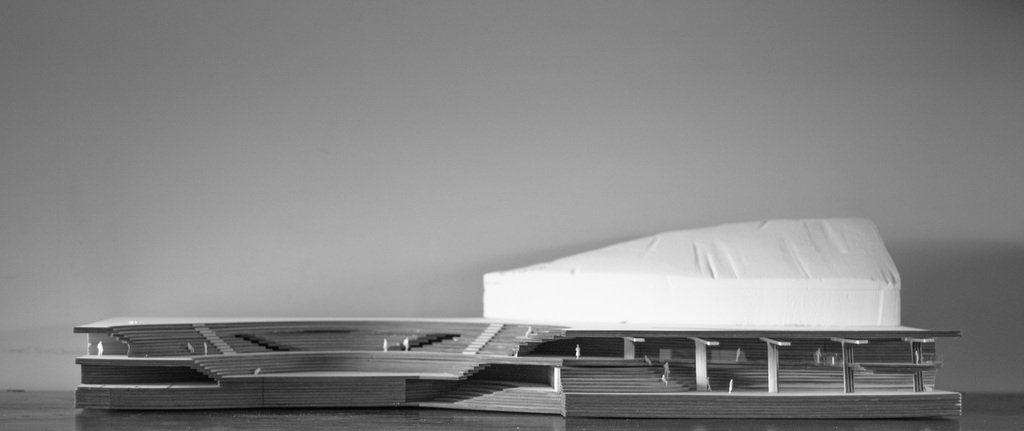The Cultural Platform
År: 2015-2016
Typ: Master Thesis
Universitet: Eindhoven University of Technology
In my master thesis I have researched and designed a architectural transformation of King’s Cross that embodies the concept of “dissensus,” as defined by Jacques Rancière. It serves as both a platform for “dissensus” and a striking example of this very notion, as it dares to challenge and re-imagine the conventional understanding of transportation hubs and museum typology through its unique architectural characteristics.
This architectural endeavor departs from established norms and embraces the spirit of dissent, providing a space for open dialogue and thought-provoking interactions. Its approach considers the complex dynamics of the King’s Cross area, harmonizing both above-ground and below-ground elements. Modern materials and inventive design choices have been thoughtfully employed to create an environment that fosters art and human connection, reshaping the traditional role of a transportation hub into a dynamic arena for discourse.
Within this innovative design, certain architectural elements, notably the staircases, transcend their utilitarian function, evolving into vital social nodes that encourage meaningful conversations and human connections. The deliberate decision to defy conventional norms and promote critical art reflects Rancière’s concept of “dissensus” as a mechanism for challenging established expectations and catalyzing transformation.
In essence, the architectural transformation at King’s Cross is not just a structure; it’s a profound exploration of how architecture can both facilitate and exemplify “dissensus.” It thoughtfully challenges and redefines the traditional roles of transportation hubs and museums through its architectural features, making it a compelling testament to the potential of architecture to provoke thought and reshape our understanding of public spaces.
